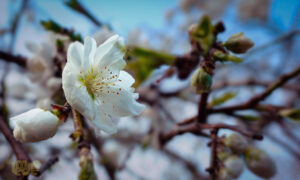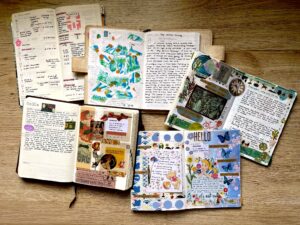A Discussion with Emerging Filipino Type Designers
Words by Spike Acosta
Typefaces materialize our ideas and thoughts while speaking to our emotions.
– Morgane Van Torre
In our everyday lives we see the written word in all shapes and forms. We see it in its more subtle legible version in books and mobile phone screens, and when it needs to grab our attention we see it blaring on advertisement boards and pedestrian warning signs. What we often fail to realize is that behind each letter we read is a type designer that worked to bring them to life.
Type design, the discipline of designing the form of written letters, has an already established history in the western world: the Swiss and their Helvetica, Italians and Bodoni, and Baskerville and England, to name a few. In the Philippines, type design, though in its infancy, is an exciting and emerging discipline with a handful of talented designers leading the new frontier.
The Japan Foundation Manila, through its Arts and Culture Grant, recently supported an initiative that introduced type design to up-and-coming designers through a unique mentorship program called Tipong Pilipino. Participants of the program were tasked to create a typeface inspired by a Filipino word of their choosing. The designers were assigned renowned local designers as mentors to guide them throughout the process.
We sat down with four of the participants to hear their thoughts on the role of type within the bigger context of Philippine design. The roundtable discussion included Lea, a Filipino designer based in Toronto, Canada (who woke up at 6:00AM to join the discussion); Hench, a freelance illustrator from Tuguegarao; Dustin, a brand building specialist; and Maedelle, a template designer based in Manila.
Starting with inspiration
Japan also has a very developed vocabulary in terms of type design. Springing from the traditional art of Japanese calligraphy known as shodō (書道) and now visible on the bright signs in Shibuya, the Japanese have always taken aesthetic pleasure in the written word. That’s why before the young designers began with their work, the program kicked off with a keynote speech entitled “Nothing is Impossible” by Japanese type designer Keitaro Sakamoto of Morisawa Inc.. Sakamoto and his company’s works are already weaved into the fabric of Japanese culture, with their typeface Shin Go being the main typeface used for the subways in Japan. Recently, they were tasked to develop the typeface used in the Tokyo 2020 Olympics. We asked our roundtable what they learned from the keynote speaker.
“I admire the Japanese for being disciplined, for being so detail oriented,” said Dustin. “Looking at how they created their typefaces, it created a new level of “O totoo ba? Are they for real?]” Dustin was referring to the amount of work put into making a typeface from the perspective of the Japanese. In the keynote presentation, Sakamoto san showed the tedious process of designing a typeface that included not just roman letters, but katakana, hiragana, and kanji characters as well. It was inspiring to see the dedication of a true master, but at the same time it showed the realities of type design – that it entailed hard work.
Maedelle continued, “What I learned from Sakamoto san was to keep refining and paying attention to the tiniest detail. The smallest curve and changes in angle could totally mean a whole different thing. That’s something that I applied in my font making.”


The Challenge of Process
“It’s so hard to design type.” Hench shared his views on the things he learned while participating in the program. “From the ideation, to moving the points, to making the vector, it’s hard. And I thought about the many typefaces around the world and thinking “this is how they did it?” Ang hirap. [it’s hard]
Hench chose the word Capacity and his design was inspired by the hand-drawn lettering used in the public transportation vehicles in his town. According to Hench, Capacity is what you say in Tuguegarao if you want to purchase all the vehicle’s available seating. Part of the difficulty for Hench was attaining the balance between beauty and usability, “Besides designing for the aesthetics, you also have to consider the function of the type design. If you ignore the other factors such as readability and legibility then what’s the use of the type design?”

Lea agrees with the difficult nature of the project, “I thought it would be easy because I’m very comfortable with vectoring. Looking at the process from a non-designer perspective it might look deceptively simple but once you’re actually in there it’s like ”oh my god.” Although the process of designing was hard, it was an experience that was worthwhile for Lea. “It was a really good experience. It made me very conscious and very intentional with my points. There’s no cheating in type design.”
Lea’s word that she took inspiration from in designing her typeface was palangga, a Bisaya word which means a special loved one. It’s a word that her family often called her by and it was a word very close to her heart.
“I’m really connected with my family.” She explained further that as her work developed, the project became more personal for her. “I got really emotional as well. During the time working on my type I had two relatives who passed away so in my mind I was really thinking about my family and in a way I kind of dedicated it to them.”

For Dustin, the challenge was a bit different. His struggle was that he wanted to create something that is extremely usable but at the same time very different from what has been done before. Dustin’s chosen word for the project was the Bisaya word maaghop, which means meek. “The idea is to convey strength that is controlled.” Initially he wanted to make a workhorse kind of typeface that had widespread use. However, in that category of typefaces, the difficulty lies standing out from the pack.
“How can you still create something that’s really different from Helvetica, Roboto, HK Grotesk?” It’s indeed hard to aim for the lofty heights of the aforementioned fonts, but Dustin continued working. Instead of dwelling on the problem, he continued to work and flow with the process. “In the end, I was just sketching something and it transformed during the vectoring process. And I was just surprised that it looked good.”

“My biggest struggle was how to make everything look consistent.” Maedelle confides in the group. Her chosen word was Baleroso which means courage. “I wanted to show that abstract concept in my type. But when I was sketching it, it turned out not looking too good. There are letters that are difficult to give distinct characteristics to because if you change it too much it won’t look like that letter anymore. But it all worked out in the end” She credits her mentor for helping her through the process. “Shout out to Jo (Joanna Malinis) because she refined my eye. She taught me that the inspiration is in the tiniest things, from shop fronts to jeepney signs.”

Despite the many challenges that they faced, the designers persevered and, with the help of their mentors, created typefaces that they were proud to call theirs. Perhaps it’s from facing those difficulties that they learned from the most. “It gave me a deep appreciation of the type designer,” said Hench. “It made me realize that I want to do more.”
A New Hope
“There’s so much yet to be explored in Philippine type and when you use it in your work it gives it a deeper sense of identity and distinction. Instead of just using jeepneys or three stars, It’s something that shows being Filipino not just in a subtle way, but in a different way.” Maedelle said when asked about what can type do moving forward. She continues, “There’s a lot of untapped things in our culture and history that we can translate into art, and I think it’s the new designers that can do it. Opportunities like Tipong Pilipino is important in bringing it out.”
Identity is also something that Lea has to contend with being a Filipino in a foreign country. “I feel there’s a lot of searching for Philippine identity here (in Canada).” The Philippine diaspora is so widespread, so I really hope that there are more opportunities like this – having more conversations between Filipinos abroad and Filipinos in the Philippines to solidify the visual and cultural identity and vocabulary. I think it’s important to establish that on the international stage.”
Dustin recalled a question posted to him in the past. “I was asked before in an event, ’What can you say about Philippine Graphic Design moving forward?’ And I said that type will usher things in. This is just the tip of the iceberg and that’s why I’m so excited. There are so many facets of Philippine graphic design and type is a very strong contender in showcasing our identity to the world.”
Hench adds, “Opportunities like Tipong Pilipino are the spark that designers need. This is what we need for Philippine graphic design to push through.”
Learn more about Philippine type design by visiting the official Tipong Pilipino website here.







